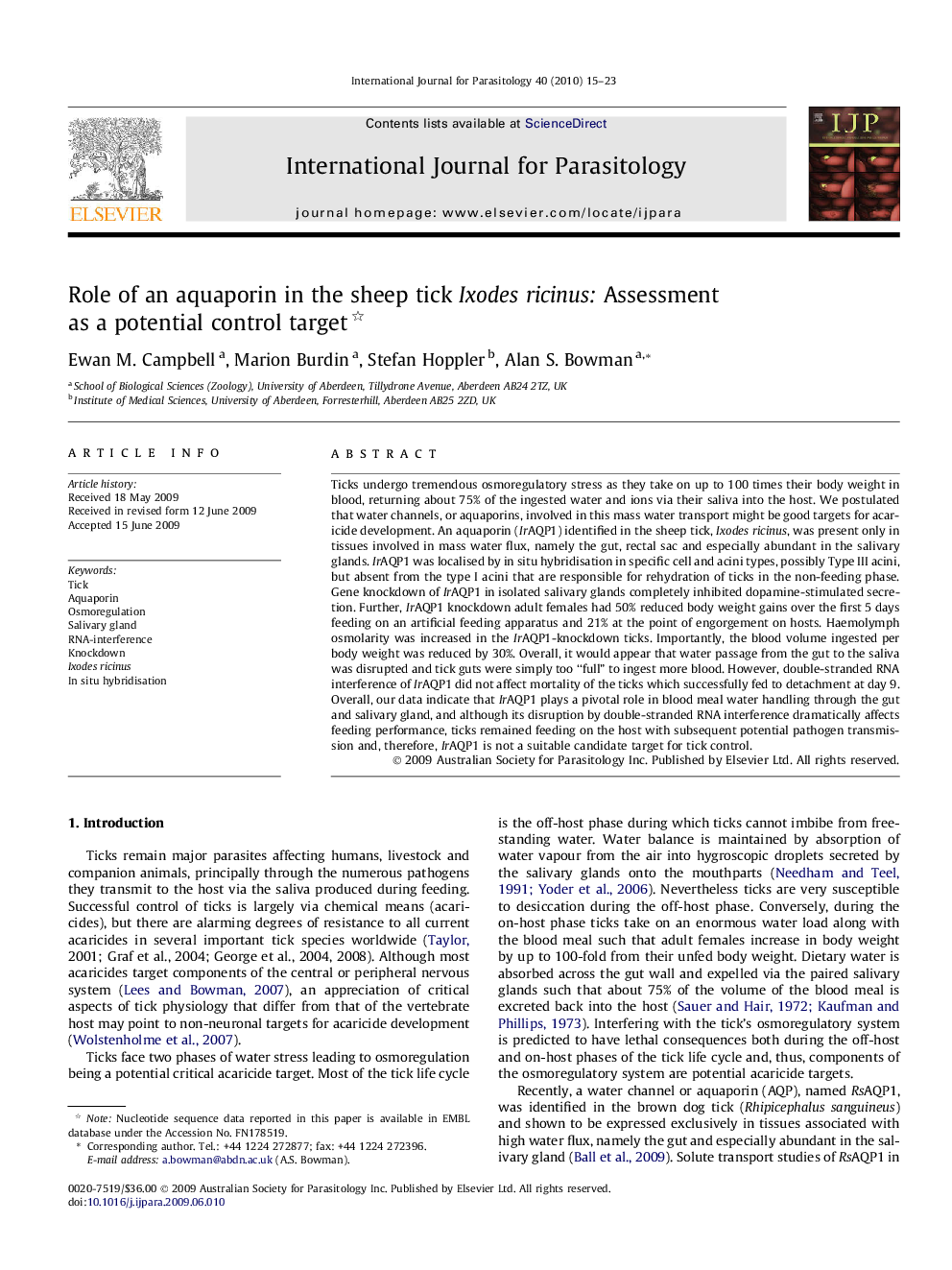| کد مقاله | کد نشریه | سال انتشار | مقاله انگلیسی | نسخه تمام متن |
|---|---|---|---|---|
| 2436385 | 1107306 | 2010 | 9 صفحه PDF | دانلود رایگان |

Ticks undergo tremendous osmoregulatory stress as they take on up to 100 times their body weight in blood, returning about 75% of the ingested water and ions via their saliva into the host. We postulated that water channels, or aquaporins, involved in this mass water transport might be good targets for acaricide development. An aquaporin (IrAQP1) identified in the sheep tick, Ixodes ricinus, was present only in tissues involved in mass water flux, namely the gut, rectal sac and especially abundant in the salivary glands. IrAQP1 was localised by in situ hybridisation in specific cell and acini types, possibly Type III acini, but absent from the type I acini that are responsible for rehydration of ticks in the non-feeding phase. Gene knockdown of IrAQP1 in isolated salivary glands completely inhibited dopamine-stimulated secretion. Further, IrAQP1 knockdown adult females had 50% reduced body weight gains over the first 5 days feeding on an artificial feeding apparatus and 21% at the point of engorgement on hosts. Haemolymph osmolarity was increased in the IrAQP1-knockdown ticks. Importantly, the blood volume ingested per body weight was reduced by 30%. Overall, it would appear that water passage from the gut to the saliva was disrupted and tick guts were simply too “full” to ingest more blood. However, double-stranded RNA interference of IrAQP1 did not affect mortality of the ticks which successfully fed to detachment at day 9. Overall, our data indicate that IrAQP1 plays a pivotal role in blood meal water handling through the gut and salivary gland, and although its disruption by double-stranded RNA interference dramatically affects feeding performance, ticks remained feeding on the host with subsequent potential pathogen transmission and, therefore, IrAQP1 is not a suitable candidate target for tick control.
Figure optionsDownload high-quality image (124 K)Download as PowerPoint slide
Journal: International Journal for Parasitology - Volume 40, Issue 1, January 2010, Pages 15–23